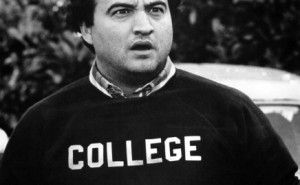Gov. Brown actually has some good ideas on improving universities
By John Seiler
I feel sorry for today’s college kids, who run up tens of thousands of dollars of debt only to graduate into a slow jobs market.
Gov. Jerry Brown actually is advancing some decent ideas to help the kids:
“Brown hopes to use state purse strings to force down their expenses, hold the line on tuition and fees, and graduate more students more quickly.
“He wants more teaching, less research and more online courses to save money and increase offerings. He says more students should be accepted from California’s community colleges.
“The universities must ‘reconfigure themselves so that they are more effective and they’re able to do excellent work, but do it in a way that will not keep the costs escalating,’ said the governor, who attended UC Berkeley.”
Both the UC and Cal State systems now employ more administrators than professors.
And here we are, almost two decades into the widespread use of the Internet — much of which was created right here in our own California universities — yet schools don’t use it enough for teaching. Probably at least half of classes could be taught using such great tools as the Khan Academy and Udacity, with the university administering tests. Doing that, you probably could cut college costs in half.
Udacity
“Amid a push by Gov. Jerry Brown to expand online course offerings at public colleges and universities, San Jose State University and an online education startup Tuesday announced a deal to provide three entry-level courses for credit online.
“The pilot program, if successful, could eventually be expanded statewide, officials said. It is unusual because of the low price — $150 a course — and because it makes courses available to students who are not enrolled at the university.
“The deal with Palo Alto-based Udacity Inc. was announced after Brown approached Udacity founder Sebastian Thrun in June.”
We need more such innovation. Modern universities expanded greatly after World War II brought an influx of veterans on the G.I. Bill. Universities operated like the centralized factories of the day, with a gigantic “plant” (university buildings) that produced a “product” (diplomas) for a “market” (jobs in business and government).
But before then, universities were looser, less rigid arrangements. The Internet allows such a more humane system to come to the fore again.
Related Articles
Guard: 'greatest entry-level job'
John Seiler: This is from a brochure from the California Department of Corrections and Rehabilitations; the job of prison guard… has
CA jobless rate drops to 8.6 percent
June 24, 2013 By John Seiler The good news: California’s unemployment rate dropped to 8.6 percent in May. That’s the
Time to break up California?
Sept. 6, 2012 By John Seiler Looks like Canada is breaking up. Reported RT.com: “The separatist Parti Quebecois has won




